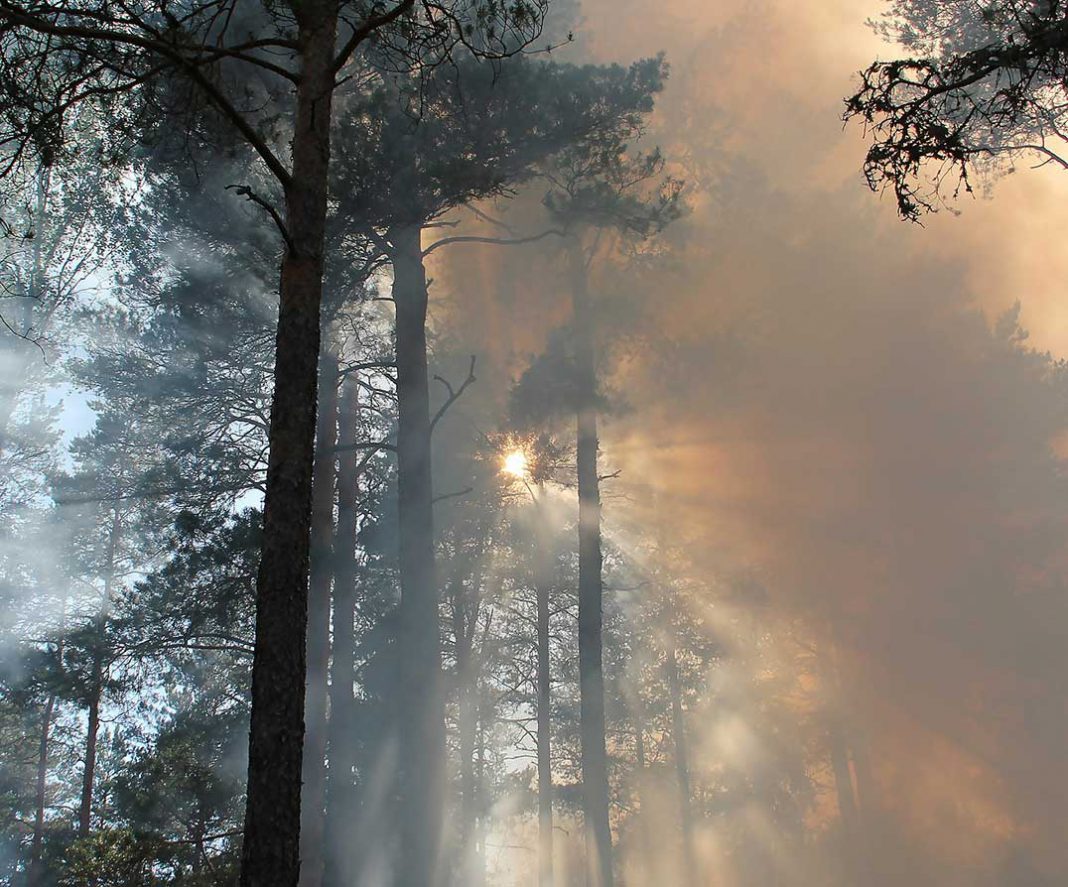MANITOULIN – While they can’t predict if the Northeast region of Ontario will see the same problems with wildfires as occurred in the summer of 2018, a pair of Manitoulin Island fire chiefs say that conditions may be similar.
John Reid, fire chief of the Central Manitoulin Volunteer Fire Department told the Recorder that recently in the municipality, a person had been caught having started a fire in contravention of the restricted fire zone (RFZ) in place in Ontario and was charged. “This person set an illegal fire. The MNRF (Ministry of Natural Resources and Forestry) investigated and charged the guy $623. I had phoned the MNRF about the incident and they said they would look after it. It was dry when the fire took place and we are back to it being dry again.”
“We need another good rain,” said Mr. Reid. “I don’t know how to gauge or predict how the summer is going to go. They (MNRF) know more about that than I do. But I do know if we don’t start getting some rain there could be a problem.”
“Here’s the thing; it’s dry out there, although not yet as dry as some other years we’ve seen,” said Mike Addison, fire chief of the Gore Bay-Gordon/Barrie Island Fire Department. He said when the province put the RFZ in place, one of the reasons this was done is that with COVID-19 and the risks to firefighters working closely together, handling the same firefighting equipment and being in the same truck would add risk. If by putting the RFZ in place it reduces the number of calls firefighters have to respond to, then it was decided to be the best course of action.
While some experts it could be a hot, dry summer in Ontario, with plenty of wildfires, the MNRF forest fire division says it’s too hard to predict what forecasts hold more than 30 days in advance.
Ellen Whitman, a fire research scientist with Natural Resources Canada’s Northern Forestry Centre in Edmonton, told the North Bay Nugget in its May 6, 2020 edition that conditions may be similar, but hesitated to compare it year to year. While 2018 was above average for fire activity, she said there are other factors at play that will determine whether it will be a problem year for wildfires.
What the forecast shows is that conditions are above normal for factors such as temperature and drying conditions. But it was the number of lightning strikes that made 2018 such a devastating fire season.
The Northern Forestry Centre produces a seasonal forecast annually, using data and weather forecasts from Environment Canada to compare weather conditions from previous years.
What the forecast shows this year is that May is “looking pretty average,” Ms. Whitman told the Nugget, while June will be warm across most of the country.
The “forecast severity anomaly” is expected to be well above normal across Western Canada from B.C. to the Ontario-Manitoba border, but above normal through Quebec and Ontario.
According to the Canadian Wildland Fire Information System forecast, Canada may experience elevated risk for fire this season. Forecasts for early spring indicate average fire activity across most of Canada. From June onward, large areas of the country are projected to be at an elevated fire risk.
MNRF statistics show that this year there have been 23 reported forest fires in the province, similar to 2019’s numbers of 25 fires reported during the same period. The 10-year average for the province is 82.
Shane McCool, information officer with MNRF’s Northeast region, told the Sault Star in its May 7 edition that weather forecasts and risks are difficult to predict for the long-term fire season, which officially runs from April 1 to October 31.
The month of May is expected to see the return of seasonal temperatures by mid-month, with increasing amounts of rain also expected to return to the forecast.
Mr. Addison said keeping the public safe remains the department’s foremost priority.
And with COVID-19, “in some places volunteer firefighters are not showing up for calls because of risks with some not having proper personal protective equipment. If one firefighter gets sick it could put the fire department out of commission. Keeping people safe is paramount,” he said, noting the local fire department will continue to respond to calls.
“We need some rain, the ground is dry,” said Mr. Reid. “The greening up will help slow things down, but it doesn’t look like all areas are greening up quickly.”
Currently, there are no active forest fires in Ontario.
The province lifted the Ontario-wide RFZ on May 16.





